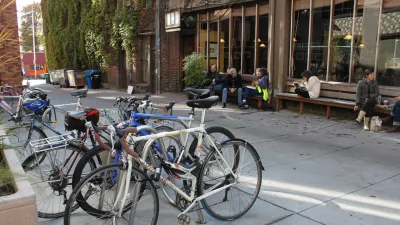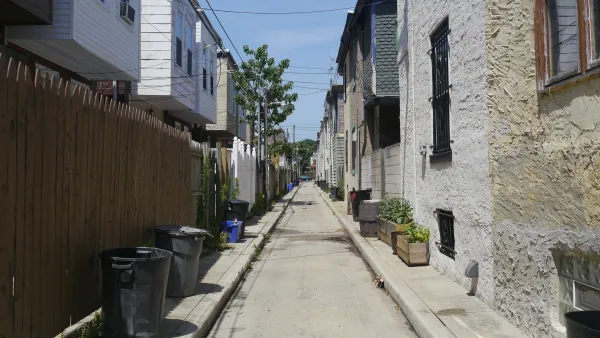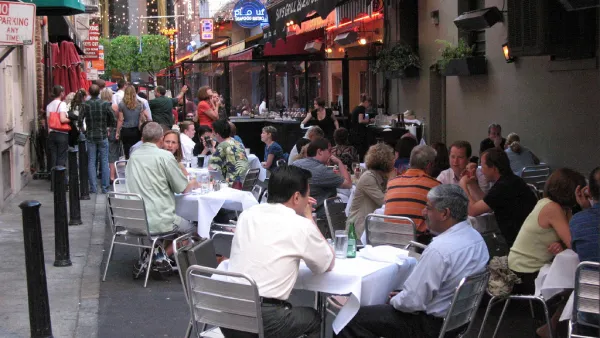From D.C. to Seattle, alleys are being reinvented as people-friendly spaces. Often perceived as dirty and dangerous, alleys are moving beyond garbage and garages to become havens for pedestrians, public art, and small business.

This might just be the most desolate alley in Denver.
Under the Evans Avenue Bridge and a stone's throw from the railroad tracks, this is an absolutely forgotten urban place, complete with the requisite tires, mattresses and beer bottles amidst the waist-high tumbleweeds.
Most of Denver's 4,000 alleys have been paved, and there are plans to pave the remaining 150 unimproved alleys by 2016. But the alleys are home to tens of thousands of dumpsters, which in turn attract illegal dumping, which in turn means plenty of scavenging.
But change is afoot. Last fall, the Rialto Cafe organized Brewer's Alley, a beer-tasting event, in the alley behind the restaurant. Several plans are in the works to activate downtown alleys off of the pedestrian 16th Street Mall.
Of course, alleys haven't always been unkempt urban voids. Alleys are as old as cities themselves, and they started off as public spaces. Dating to the early 1700s, Elfreth's Alley in Philadelphia is the oldest residential street in the country.
The word alley is more than 600 years old, owing its origin to the French alee, meaning 'walking or passage,' and aler, or 'go.’ Walking and going are rarely what modern alleys are all about -- but they inherently remain passages.
While U.S. cities have largely eschewed alley uses that don't involve garbage or garages, pre-automobile cities all over the world have historic alleys that were meant for people, complete with housing, stores, restaurants, bars and parks.
It follows that many cities are trying to activate -- or re-activate -- their alleys and make them human-scale places, sometimes with restaurants, retail and outdoor art. Cities from Los Angeles to Washington, D.C., are activating alleys for temporary special events as well as making aesthetic and functional improvements for the long haul.
FULL STORY: Alleyways become pathways to urban revitalization

Analysis: Cybertruck Fatality Rate Far Exceeds That of Ford Pinto
The Tesla Cybertruck was recalled seven times last year.

National Parks Layoffs Will Cause Communities to Lose Billions
Thousands of essential park workers were laid off this week, just before the busy spring break season.

Retro-silient?: America’s First “Eco-burb,” The Woodlands Turns 50
A master-planned community north of Houston offers lessons on green infrastructure and resilient design, but falls short of its founder’s lofty affordability and walkability goals.

Test News Post 1
This is a summary

Analysis: Cybertruck Fatality Rate Far Exceeds That of Ford Pinto
The Tesla Cybertruck was recalled seven times last year.

Test News Headline 46
Test for the image on the front page.
Urban Design for Planners 1: Software Tools
This six-course series explores essential urban design concepts using open source software and equips planners with the tools they need to participate fully in the urban design process.
Planning for Universal Design
Learn the tools for implementing Universal Design in planning regulations.
EMC Planning Group, Inc.
Planetizen
Planetizen
Mpact (formerly Rail~Volution)
Great Falls Development Authority, Inc.
HUDs Office of Policy Development and Research
NYU Wagner Graduate School of Public Service



























